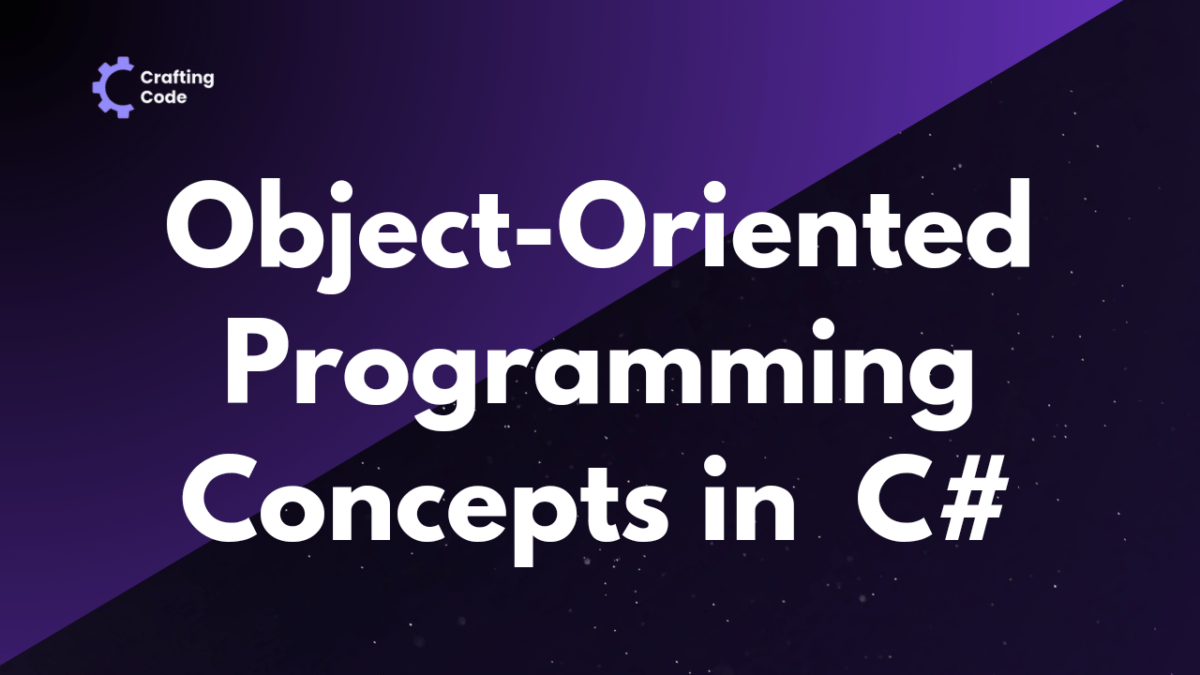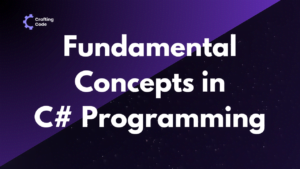Object-Oriented Programming (OOP) is a paradigm that revolutionized software development by introducing a more organized and modular approach. In the context of OOP concepts in C#, which is a versatile and widely-used programming language, understanding these principles is crucial for building scalable and maintainable applications.
What are OOPs Concepts in C#?
Object-Oriented Programming is a programming paradigm that revolves around the concept of “objects.” These objects represent real-world entities and consist of data, in the form of attributes or properties, and methods, which define the behavior of the object. OOP is based on four fundamental principles:
How OOP Differs from Procedural Programming?
In procedural programming, the focus is on procedures or routines, and data is often global. In contrast, OOP emphasizes the organization of code into reusable and self-contained objects. This leads to several key differences:
- Data and Methods Bundling:
- OOP bundles data and methods into objects, promoting better organization and code structure.
- Code Reusability:
- OOP facilitates code reuse through inheritance and polymorphism, allowing developers to build on existing code.
- Encapsulation Enhances Security:
- Encapsulation in OOP enhances security by controlling access to data through well-defined interfaces.
- Modularity and Scalability:
- OOP promotes modularity, making it easier to scale and maintain code as projects grow.
Let’s make it more clear –
| Aspect | Object-Oriented Programming (OOP) | Procedural Programming |
| Paradigm | Centers around objects that encapsulate data and behavior. | Focuses on procedures or routines that operate on data. |
| Data and Functions | Combines data and functions into objects. | Separates data and functions into separate structures. |
| Primary Unit | Object is the primary unit, bundling data and behavior. | Functions or procedures are the primary units of execution. |
| Encapsulation | Encapsulation is a core principle, hiding internal details. | Limited or no built-in support for encapsulation. |
| Inheritance | Supports inheritance, allowing classes to inherit from others. | Supports inheritance, allowing classes to inherit from others. |
| Polymorphism | Embraces polymorphism, allowing objects to take multiple forms. | Limited or no built-in support for polymorphism. |
| Code Reusability | Promotes code reusability through classes and inheritance. | Code reuse relies on functions and procedures. |
| Complexity Management | Handles complexity through encapsulation and abstraction. | Manages complexity through modular functions. |
| Example Languages | C#, Java, Python, etc. | C, Pascal, Fortran, etc. |
Key Pillar of OOPs Concepts in C#
Classes and Objects in C#
- Class
A class is a blueprint or a template for creating objects. It encapsulates data (attributes or properties) and behaviors (methods) that define the entity.
Example in C#:
public class Car
{
// Attributes
public string Model { get; set; }
public int Year { get; set; }
// Methods
public void StartEngine()
{
Console.WriteLine("Engine started!");
}
}- Object
An object is an instance of a class, representing a specific realization of the class blueprint.
Example in C#:
// Creating an object of the Car class
Car myCar = new Car();
// Setting object properties
myCar.Model = "Crafting-Code";
myCar.Year = 2024;
// Invoking object methods
myCar.StartEngine();Encapsulation in C#
Encapsulation is one of the fundamental Object-Oriented Programming (OOP) concepts in C#, and it refers to the bundling of data (Attributes) and methods (Functions) that operate on the data into a single unit, known as a class.
It provides a protective barrier around the internal state of an object, controlling access to the data and preventing unintended interference. Encapsulation enhances data security, promotes code organization, and contributes to the modular structure of a program.
Example:
public class Employee
{
private string name;
private double salary;
public void SetName(string empName)
{
name = empName;
}
public string GetName()
{
return name;
}
}The code block here demonstrates encapsulation in C# by utilizing private fields (name and salary) and providing controlled access to the name attribute through setter (SetName) and getter (GetName) methods.
Inheritance in C#
Inheritance is a core OOP concept in C# that allows a class (subclass or derived class) to inherit properties and behaviors from another class (base class or parent class).
The derived class can reuse and extend the functionalities of the base class, promoting code reuse and establishing a hierarchical relationship between classes. Inheritance facilitates the creation of more specialized classes, reducing redundancy in code and enhancing code extensibility.
Example:
public class Animal
{
public void Eat()
{
Console.WriteLine("Animal is eating");
}
}
public class Dog : Animal
{
public void Bark()
{
Console.WriteLine("Dog is barking");
}
}The code Illustrates inheritance by extending the base class Animal. The Dog class inherits the Eat method, showcasing code reuse and hierarchy in object-oriented programming.
Polymorphism in C#
Polymorphism, its genuine meaning is “many forms,” is a key OOP concept in C# that enables objects to be treated as instances of their base class, even if they are instances of a derived class.
Polymorphism allows a single interface to represent different types of objects, providing flexibility in code design. There are two main types of polymorphism in C#: Compile-Time Polymorphism (Method Overloading) and Runtime Polymorphism (Method Overriding).
Polymorphism enhances code flexibility, adaptability, and readability.
Example:
public class Shape
{
public virtual void Draw()
{
Console.WriteLine("Drawing a shape");
}
}
public class Circle : Shape
{
public override void Draw()
{
Console.WriteLine("Drawing a circle");
}
}The above block of code highlights polymorphism with method overriding. The Circle class extends the base class Shape and provides a specialized implementation of the Draw method, showcasing flexibility in code design.
Abstraction in C#
Abstraction in C# is the process of hiding complex implementation details and exposing only essential features of an object. It involves creating abstract classes and interfaces to define a blueprint for classes that inherit from them.
Abstraction allows developers to focus on essential functionalities without being concerned with the intricate details, promoting code clarity and maintainability. It plays a crucial role in designing scalable and adaptable systems, providing a high-level view of objects and their interactions.
Example:
public abstract class Shape
{
public abstract void Draw();
}
public class Circle : Shape
{
public override void Draw()
{
Console.WriteLine("Drawing a circle");
}
}The code here demonstrates abstraction with an abstract class Shape, emphasizing the high-level concept without implementation details. The Draw method is abstract, leaving the specific implementation to derived classes.
Understanding and applying these OOP concepts in C# is important for any developer aiming to create efficient, scalable, and maintainable code. Make use of encapsulation, inheritance, polymorphism, and abstraction to elevate your C# programming skills.
We provide insightful content and resources to empower developers on their coding journey. If you found this content helpful, be sure to explore more of our materials for in-depth insights into various Programming Concepts.
Stay tuned for future articles and tutorials that illustrate complex topics, helping you become a more proficient and confident developer.




